The Fuji 18mm f/2 – A fun wide-angle for your X-Pro 1
Yep! I still have the review sample of the X-Pro 1 here with me along with the 18mm and 35 1.4 lenses. While I prefer the 35 1.4 for the X-Pro 1, and that would be THE lens I chose if I bought the system for myself, I do like the little 18mm as well. I managed to get more time in with it this week, just with some fun shooting with my son at the local Zoo here in west Phoenix. In real works situations, in full sunlight, the lens performs well speed wise though it is still not a system built for shooting action.
This small article is just here to show some more samples with the X-Pro 1 and 18mm f/2 lens. If you did not yet see my full review of the X-Pro system, you can read that one HERE. It seems many of you took my review in a more negative way since I talked about the negatives of the camera as well as the positives. The fact’s remain though that the X-Pro system is a but on the slow side when it comes to shooting but that doesn’t keep me from liking it. The reason I like this camera is due to the image quality, which is REALLY good, especially if you like that Fuji look, which I do. Also, just to be clear..the X-Pro 1, just like the X100 IS faster than the aging Leica X1. Though if I were a betting man I would say an X2 would have to be announced on May 10th as Leica can not compete any longer with the X1. We shall see what is coming soon!
[ad#Adsense Blog Sq Embed Image]
As for the X-Pro 1, as I walked around all day shooting this camera and lens I could not help but feel that I enjoyed the X100 just a little bit more. It basically has the same IQ, is smaller, and has a 35mm equivalent lens, which is my preference. With the new firmware people are now saying that the X100 is FINALLY the camera they have been wanting. The X100 (my review is here) now has fast AF and shooters who were ready to sell their 100 are now loving it more than ever. I sold my X100 a while ago in anticipation of this system but since I already own several interchangeable lens cameras I think I may buy me an X100 again for my personal use now that the firmware has made major improvements.
With that said, the X-Pro 1 is a highly capable camera with superb IQ and if I did not own any system at all I would be highly tempted to invest in this one (after I thoroughly tried out the new OM-D). The lenses while feeling a bit on the light side are really good optically.
My quick thoughts on the lens
The build of the 18mm is on the light side, which is my main gripe. It is the lightest feeling out of all of the Fuji lenses. It is not the last word in sharpness and detail and it does have some CA on the edges at times (high contrast scenes) but overall, the lens can give some really nice results. Paired with the high ISO capability of the X-Pro 1, this lens makes for a great 27mm equivalent lens which makes for a great normal wide angle. The AF is a little faster with the 18mm than the 35mm but I still missed shots when my subject was moving. Again, the X-Pro is NOT going to be a speed demon like a DSLR but that is not what it was designed to do.
The cost of this lens is $599 and if you buy it expect superb packaging, a very lightweight lens, metal lens hood (included) and overall very good to excellent image quality. It’s no Leica, but it’s also $599, not $5999 🙂 Below are some fun photos I shot with the lens, all JPEG’s as I am still waiting for RAW support. I can say that the more I use it, the more I tend to ignore the quirks like the rattlesnake chatter. I’d prefer it to not be there but it is what it is. This lens is a “fun” lens. Wide open it is share with some softness near the edges but as you stop down it sharpness up. My copy never gets bitingly sharp but it is still a very good lens optically. I shot it in Aperture priority using the Aperture dial on the lens to dial in what I wanted for any particular scene.
If you own the X-pro 1, you can buy this lens at Amazon as they have had it in stock for a while now. Their 18mm f/2 page is HERE
You can click on any image below for a larger version! All were shot with the 18mm f/2, all OOC JPEG
f/2.8 – 1/60 – iso 200
–
f/2 – 1/3800 – iso 200 – -0.67
–
f/2 – 1/30 – iso 320 – -0.67
–
f/2 – 1/1900 – iso 200
–
f/5 – i/680 – iso 200
–
f/2 – 1/200 – ISO 200
–
f/4 – 1/850 – iso 200
–
f/2 – 1/160 – iso 200
–
f/2.8 – 1/30 – iso 500
–
f/4 – 1/1250 – iso 200
–
f/2.8 – 1/3000 – iso 200
–
f/2 – 1/200 – iso 200
–
f/5.6 0 – 1/2700 – iso 200
–
f/2 – 1/160 – ISO 200 – -1.33
–
and this last one is a full size out of camera JPEG – f/4 – 1/1900 – iso 200 – -0.67
–

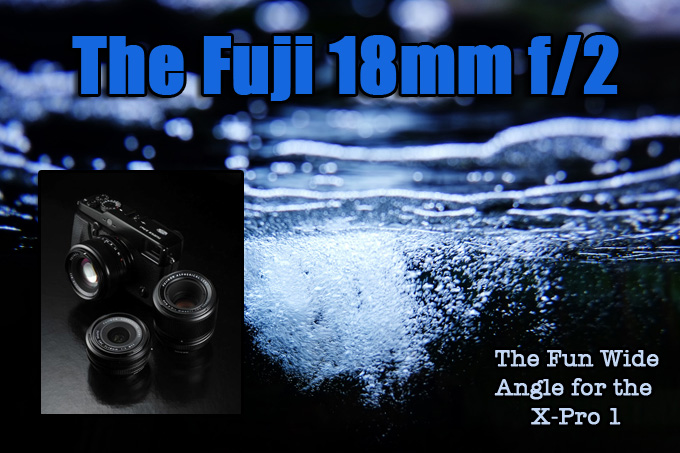



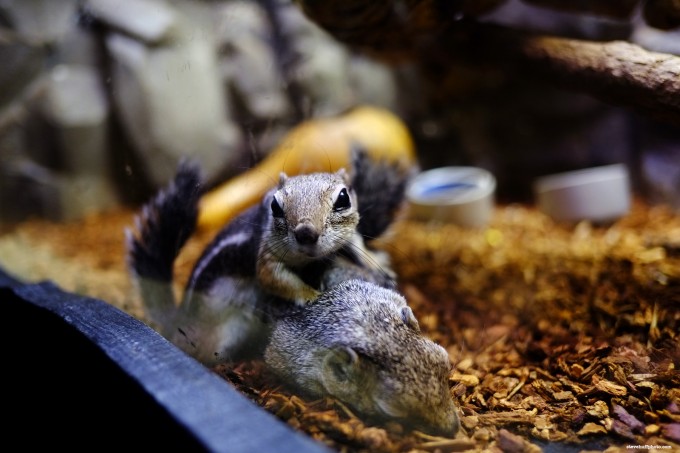
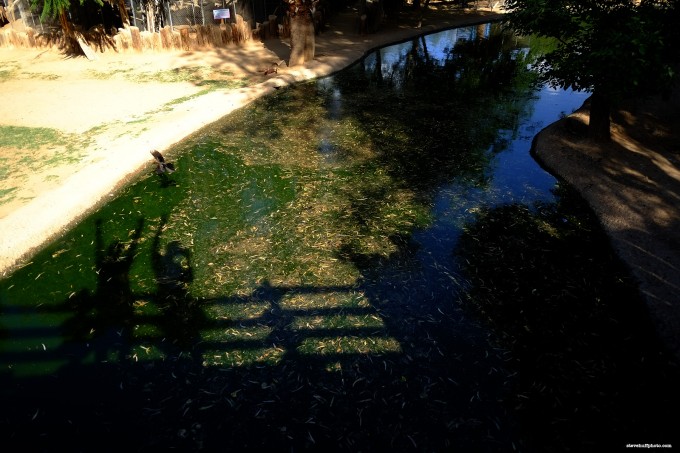
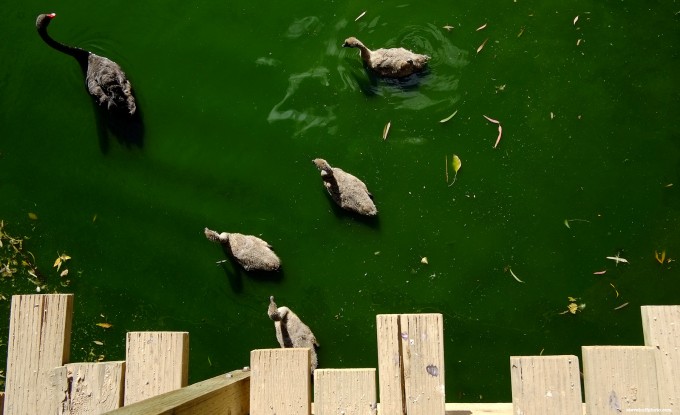
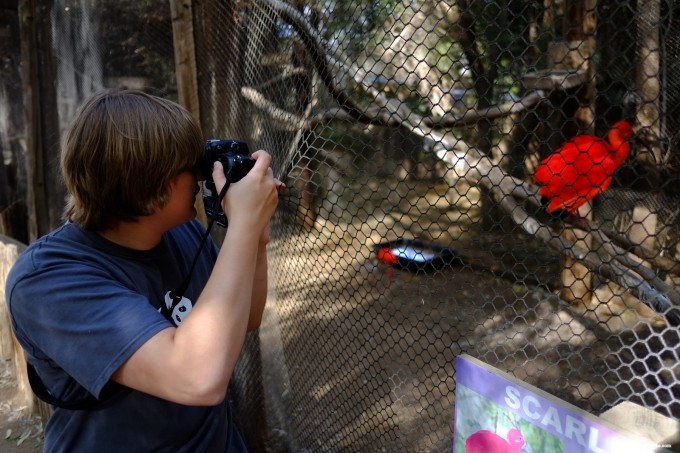
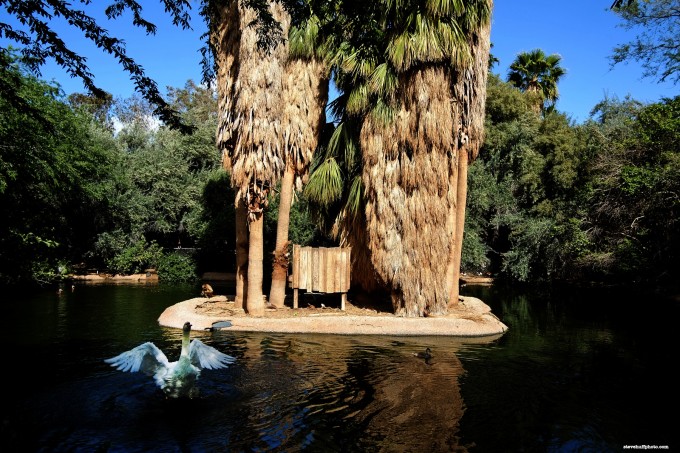
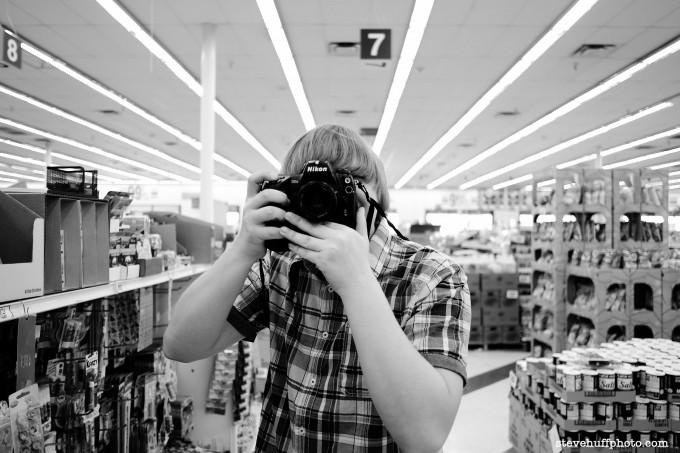

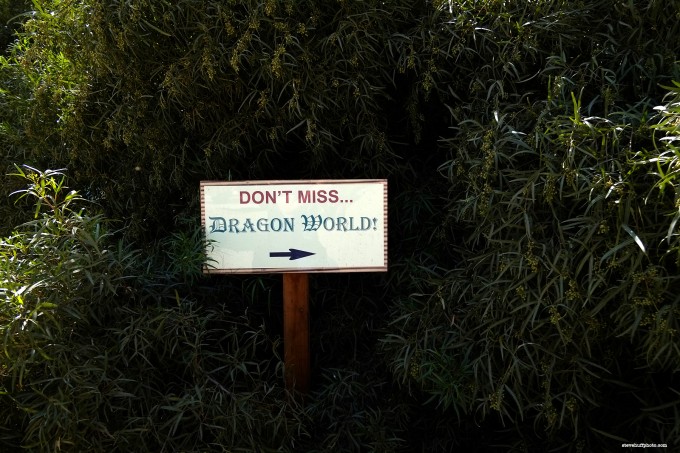

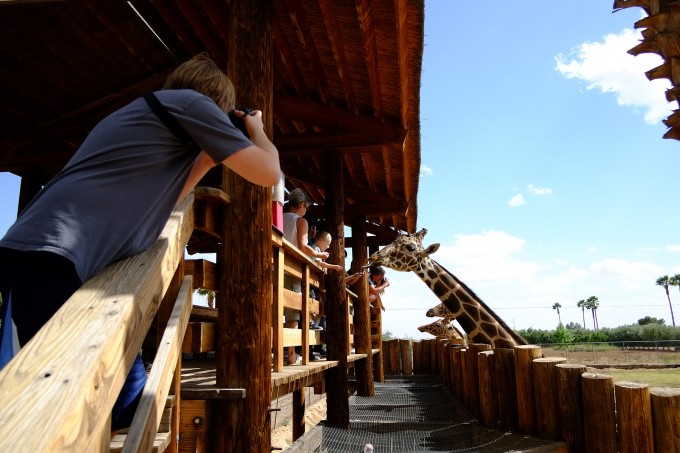
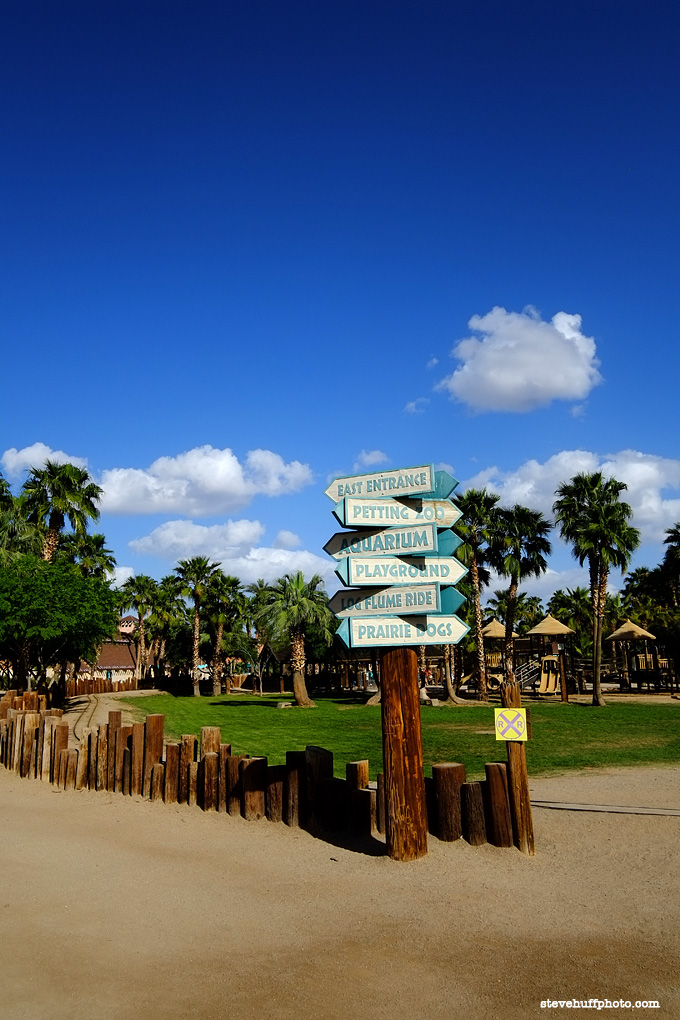
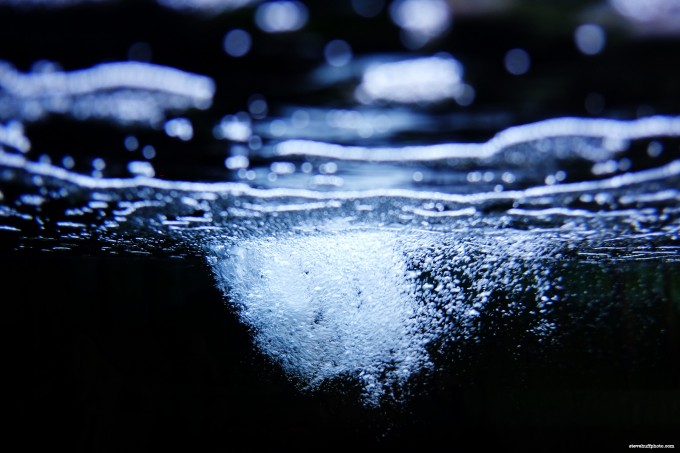
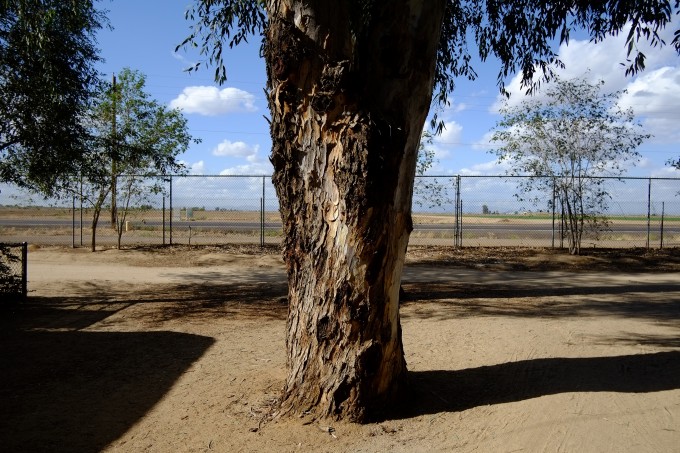

Three years later and the Fujifilm PRO1 still rocks. It’s much, much better now! Firmware updates fixed many of the problems that plagued this camera and its lenses. Today you can buy one of these great cameras brand spanking new for a couple of hundred dollars. It’s not an DSLR, it’s sort of a Leica replacement, a rangefinder alternative. Just relax and take a little more time. The files from this camera still look great. That hasn’t changed. Lots of detail and beautiful colours and tones. The 18mm f/2 lens is not the best Fuji lens, but it’s compact and fun to use.
I wonder how this lens compares to the Panasonic 14mm for m43.. 🙂
I love this little lens. I have all 3 of the X-Pro lenses and they are all excellent.
I have seen a number of comments around the web that suggest that the IQ is not so good with this one. Well, in real life use it is just excellent.
Pixel peepers may find fault squinting into corners at 500% magnification or whatever but real photographers capture life as it is written and produced awesome images for decades before this lens was thought of and did so with much ‘worse’ gear.
Buy this and use it – you’ll love it. The camera is so light and portable with this on you won’t believe it.
I just got my X-Pro1 and tried to shoot a few photos indoor using ISO3200 & 6400 and convert the RAW files to TIFF in Silkypix and the files were a lot more noisier than the direct JPEG output from the camera. Is this Silkpix’s problem? Anyone experienced the same?
I have mine 5 days at this point, and I bought it after months of waiting for it and ultimately finding out that it wouldnt work as a OVF camera to run my Leica lenses. It was either this or a NEX7, which I had on trial, I really loved it and then I got this on trial, and its a game changer. I never owned a X100 and I have been on film for about 20+ years.
In terms of just the camera, and not the lenses as ALL of the current reviews are primarily centered on, this camera is really very cool indeed. Its a touch slow to write files to my 133x 32gb card, which I will have to experiment with other cards, but the options and the images are stellar.
The EVF isnt as fast as the NEX7 but thats ok, it just requires a different kind of perception, and the OVF is useless for me unless Ive zoned it and am just using it for fast street composition. My CV 12mm (18mm) looks totally great here and makes for a very compelling docu/reportage rig.
I work in a camera repair shop and I have seen every camera known to man in the last 6 years and there isnt much out there which really makes me feel that shooting digital is anything but a compromise until I saw the files that come from this camera. The dynamic range and the tonality and how sharp those images are on my lenses just blows me away. Sure.. Id love to have a negative for every RAW file it makes, but I am going to be using this camera for a very big project this year which is going to be split with an XPan and 100 rolls of film anyway.
As for the tech-heads, well, you should see this camera as a gateway to thinking out of the box, its the first non-video centric camera Ive seen in a wile and its got a big brain with a ton of image controlling options and a great way of making the camera seem like it was designed for film photographers. Makes me wonder if it was designed by dyslexics for dyslexics!
Uh, ok buddy. I guess you can lead a horse to water but you can’t make him drink. I guess I’ll just have to go on what my two X100’s have been doing..maybe you got the good one.
It’s too bad the remoteness of the internet turns people so snarky…I’m pretty sure if we were having a drink together you wouldn’t be so nasty, for long.
Anyhow, thanks for the humor lesson and best wishes to you.
Dan – I’m not being nasty, nothing could be further from the truth. Just telling you the X100 aperture system does not act any differently in low or bright light conditions – the only differential is that in low light, most users are using large apertures, hence less blade movement – so (possibly) the perceived impression that, conversely, in bright light it is having to do something ‘extra’, thereby slowing it down.
I’ve just reviewed mine again – power save on AND off, bright and low light – and even without the aid of a collimator or similar – it is fairly obvious that total metering/AF/shutdown sequence time is fairly consistent in all situations.
It is a relatively little known fact that on all TTL cameras, total aperture shutdown and re-opening time (often referred to as ‘recharge’) combined with AF/Metering calculation is the primary limiting factor in ‘speed’ or ‘frame rate’, call it what you will …. not ‘faster’ shutter/winder operation. Some DSLRs use secondary mirrors/sensors during mirror blackout periods to refresh AF/metering whilst the mirror is obscuring view – hence higher frame rates – as the camera can reshoot immediately the mirror drops fully, as interim measurements mean no need to take further (visible) metering/focus samples.
Some pro DSLR models even have secondary cams that only ‘half-flip’ the mirror at speed – reducing the overall time it recharges. They could, theoretically, stop it entirely in high burst shooting modes, but unwary consumers would probably assume it was defective and pursue warranty claims. The X100 and similar cameras (with direct in-lens shutters) can do none of this of course ….
Fuji engineers presumably designed their aperture mechanism/control system to allow sufficient time to meter/AF before shutting down in readiness to take an image. A firmware change can alter the efficacy of sampling – speeding up the actual AF/metering time – but the aperture mechanism itself remains unchanged and is itself also limited by physical mass, inertia, friction, limitations too.
If you are experiencing faster AF and overall speed in low-light, it is probably a combination of an overall improved AF algorithm and larger aperture use, (compared to smaller apertures in bright light) …. not power save, or Fuji ‘revised’ bright light v low light AF settings, or any other factor. I can assure you my only aim is/was to prevent incorrect observation being passed on as literal fact, with a little humour thrown in ….
I’m sure if we met, we would indeed spend some time happily enjoying a drink and discussing our X100 ownership!
Here is a video to illustrate what I am describing. I wonder if the Xpro1 uses the same methodology in bright light.
http://www.youtube.com/watch?v=kqd0nB6_soM&feature=youtu.be
Hi Dan – all X100s react to light change in a similar way – but it is not part of a pre-ordained aperture cycle, needed on every shot.
I don’t have access to the Fuji design spec sheets but it is presumably part of a continuous metering scenario (not dissimilar to the DSLR metering interim methods I described earlier). What you are actually illustrating is Fuji making things faster during any ‘down-time’ – i.e. when not fully ‘activated’ by shutter press. It is in a monitoring mode, periodically re-evaluating values. Users would actually see a marked decrease in performance if it was locked on it’s last used value, i.e. a dingy cellar and the next shot was in bright sunlight for example, as the camera would have to totally re-monitor the new scene’s parameters before closing to ‘taking’ mode.
(P.S. I think this light change response is also the cause of what some users are calling ‘useless lens chatter’ on the XPro1 – I don’t own one, so can’t comment further)
If you press and hold the shutter – as in when taking a shot – it stays in one place – the pre arranged aperture selection. Similarly, if the light value remains the same – it also stays shut down. If you move the camera at any other time and/or the light values move from the preset, it will take an interim reading as before. It’s Fuji being innovative. As I said before, you are confusing the lack of any need to close down from f2, or similar large value apertures, in low light conditions, as the camera “not doing anything”, therefore assuming it is working ‘faster’. This illusion is possibly aided by the ‘consistency’ of low light conditions (dark rooms/night/gloom) as bright ones are actually a changing mix of light sources or reflections, shadows, etc.
Unless you use an external meter, like old rangefinders (and an AF unit – lacking on same), then TTL metering/AF needs to access data in some way – e.g. through the lens. Presumably Fuji also chose a mid-value for open-aperture metering as it never needs to open fully to the maximum f2 value each time (as does every basic DSLR system) to perform meter/AF readings. The actions you feel ‘slowing’ are actually processes designed to minimise overall delay!
The only paradigm or scenario I can use to illustrate the advantages of this process, is the old manual stop-down SLR process – where users had only one option – view/compose/focus at full aperture, then close down to taking aperture for metering, speed selection and/or shutter release. Next shot – open up for viewing composition etc. close down for metering/shutter release, next shot ….. well, you get the idea!
No auto iris stop-down – or open aperture metering … reviewing the shot, or re-focusing, or changing shutter/aperture EV values, needed the repetition of each step in the process. It took about 15 years for modern auto stop down mechanisms to emerge from this manual backwater! Leica (rangefinders) used this to their advantage – claiming speedier operation as this was not required on their externally metered models.
All good TTL monitoring cameras HAVE to use similar processes – basic P&S models have long ‘shutter lag’ as most seem to perform these exposure calculations on the fly during the shutter release process – if the X100 was as slow as most consumer compact models then I think that would be cause for concern. As an engineer, I can think of ways to make this process faster/instant on ALL cameras (someone probably already has, and retains a patent) but cost is usually a factor in camera design – even if your name is Canon.
I don’t think I’ve ever really missed a shot with either the X100 or any other digital camera I own – certainly no more than in film days, when I used some of the fastest SLRs known to man! I feel far too many reviewers (amateur or otherwise) put down the latest blazing pro DSLR, then wonder why EVERY camera they pick up afterwards is not as ‘fast’, well specified, etc. As I’ve posted elsewhere in this particular thread, different cameras are simply different ‘horses for courses’.
If you still think the X100 flawed (significantly) then I’d suggest it’s time to move on ….
In Optical Viewfinder Power Save mode the shutter remains closed until you actually press the shutter button down half way. It then has to open, adjust the aperture to the correct setting and focus the image on the sensor. This extra mechanically movement is why focus is a bit slower in low light in this mode.
In EVF or LCD view mode the camera is constantly adjusting the aperture as you are framing the image. In BRIGHT LIGHT, when you press the shutter to focus and lock aperture, the camera will cycle the aperture from partially closed, to fully open, to closed again and then to the aperture that you have preset or the camera has choosen for the given exposure value.
The only time it does NOT do this is in low light, because the Live View mode has already set the aperture to F2 and that it also it’s destination aperture. Thats why everyone is so impressed with the focus speed while they are fondling the camera in their bedroom….it IS fast in low light. In bright light it is essentially the same as it ever was.
Perhaps you don’t own an X100 so you would not know this…And perhaps you have been raised by hillbillies so you are not aware that you sould like a jerk in your response. Good luck on both counts.
Dan
I do own an X100 – you apparently don’t. The aperture is not “constantly adjusting” – it is a manually controlled aperture and you can set it to what you want – the camera does not have to ‘do’ anything.
The X100 is also not an SLR – it has no aperture cycle, i.e. insofar as an SLR aperture has to close as part of the mirror lift, shutter operation/wind-on, mirror drop cycle – which is set by multiple interleved cam/lever/magnet/motor operations. Even so, all cameras have inbuilt operational fixed values based upon individual mechanical design efficiency. It is this that normally governs max. ‘frame rates’ – no matter how fast the shutter speed is, it always has to wait for aperture shut-down (unless it utilises non-TTL metering and therefore aperture remains in shut-down position.
The X100 shuts the aperture to chosen value on half shutter press – it stays there until you let go, or take a shot – finito. The only time it does not is when you choose maximum aperture (i.e f2) in either low or bright light conditions …. and …. since it has no need to close down, it does not ….
None of this has any affect on AF operation, Metering, or any other concurrent function in either Live View/EVF or Direct Optical View. The X100 has no ‘aperture cycle’ – keep your finger off the shutter release, aperture stays open – half/full press, it shuts to instigate/take an image. Arguing that Live View, bright, or low light or any other electronic function, affects the mechanical shutdown process is utter b****cks and even if it did, it would be by imperceptible milliseconds, as these rapid functions are timed by linear electron displacement within circuitry …. not mechanical functions.
If you don’t believe me – get an X100 and look into the lens and observe the aperture shut down and re-open ONLY once – it has no need to continually ‘close/open/close/open etc.’ (as you claim) to meter or AF – it has no process ‘cycle’ to be improved by firmware in any light (unless it has installed little microscopic people who replaced or modified the actual factory fitted aperture components to make them go faster) as all of it’s mechanical operations are fixed by their original production, machined, component, dimensions.
Firmware can alter lots of things – but unless it has created and installed retrograde nano-bot engineering technology hitherto unknown on planet Earth – it ‘aint done diddly squat to anything mechanical inside the camera.
Sorry if either my original reply – or this one for that matter – offends. I was not raised by hillbillies – or so Uncle Jethro and Granma’ Moses done tell me (shucks!) …. I’m just more intelligent and well-informed than you, a fully trained engineer to boot, and do not suffer fools gladly. I’m also actually from the UK – where we totally understand the use of sarcasm, blunt statements, and their correct application within social milieu.
Ok, thanks for the input. The thing about the NEX 7 is the file size. I don’t want or need, anything like 24MP, to me , it’s too much. Files that size kind of clog things up. The Nikon looks good, but I think it’s time to go and spend some time at the camera store looking at an X100. With the latest firmware and some time to get to know each other, we might just get along. I was thinking to keep my Canon G11 for the few times I needed a zoom. Both the G11 and the X100 added together, weigh considerably less than my DSLR and a good 28mm, 1.8, AF prime. And, the little G11 can be kind of amazing at low ISO’s. I’m planning a “Daily Inspiration” shot with it.
It’s time to take the plunge.
People looking at the x100 need to try it in bright daylight if speed is a concern. The latest update has improved low light shooting but outdoors it is slower than the x1 due to it’s aperture cycle time.
Duhhh – does this make any sense at all? Aperture Cycle Time? What the Hell is ‘aperture cycle time’ even supposed to mean? I’ve even Googled it – it don’t exist.
This now proves the “… Fuji X100 can’t take photos ….” argument has now officially reached an all time low ….
(P.S. The above is sarcasm in case you were wondering. I suspect I know what you are actually trying to say – unfortunately, it’s a load of imaginary photographic bull***t …. think about it next time!)
“Usability is the key” = Nikon V1/J1 – they are the best small allround camera these days in my opinion. But be prepared for a little noise even at ISO 100 – but the noise is not the disturbing kind (to me) even up to something like 1600. Great colors, AF, sharpness etc.
That was in reply to Harry.
Steve, (or any serious reader), I have a question, and I really agree with your outlook in photography, so you’re the guy to ask. After reading this quick review, I’m still not sold on this camera. I’ve been schlepping around SLR’s and DSLR’s for 35 years and have a sloping shoulder to prove it. I would really like to get a smaller, lighter camera with decent IQ, but like yourself, to me, usability is key. The 4/3’s seem to fall apart above 400 ISO, (and let’s face it, 800 and 1600 are useful), the Fuji’s are slow, and I can’t justify the M9’s price. Have you got a suggestion, or should I switch my DSLR camera bag to the other shoulder for the next 35 years to even things out?
Yes Harry – I’d definitely swap shoulders ….
In a slightly more serious tone, there is no ‘perfect camera’. If you wait for it to arrive, you’ll never buy anything. You want a “… smaller, lighter camera with decent IQ ….” but, as you say, 4/3rds isn’t in the picture from 400 ISO – the M9 is in much the same league, despite it’s base performance. You claim the Fuji’s are ‘slow’ – but for what? Olympic sprint events … ‘street photography’, or just normal everyday shooting?
The Nex range is a mixed bag that is equally not to everyone’s taste. Nikon 1 series is fast AF, but noisy images in shadows at even normal speeds. Apart from an oddball Ricoh range and hundreds of P&S models, what’s left …. not much!
Fuji – and the Nex 7 are clearly attempts to move the high IQ/low mass genre forward. Is either the ideal small camera? Not to everyone – it’s still the same old ‘Nikon/Canon or one of the other choices’ we’ve endured for years. Just a case of ‘…. you pays your money and takes your pick ….’
P.S. Don’t buy an OMD – according to the latest forum trolls, the paint falls off ’em!
It all depends how big you are gonna print. Or if you gonna print at all. I have a Fuji X10 I find it perfect for the street photography I do and post it up on the web. Large depth of field, good zoom range, black small P&S discreet body, and good enough image quality for web and small prints even at usable ISO 1600…
Have a look at the reviews of nex 7 and fuji x-pro on soundimageplus and luminous landscapes, lots of practical observations that might help you decide. I have nex 7 for almost 3 months now and have been very happy with it. I do landscape photography mostly and have great detailed A2 prints from iso100-400 without any messing with noise reduction and at 800 with moderate noise cleaning in lightroom. At 1600 you can print at the same size with some good postprocessing, I use topaz denoise but noise ninja is very good as well. In any case have a look at their reviews and try cameras at the camera store, I quite like nex7 design, tried fuji x-pro in my local camera store and it was OK, I am not a fan of pastiche and retro chic for the sake of it.
I really must say I was excited about this camera before it came out. I do love the image quality but as a person who takes photography in the most varying of situations I can’t see this as being the camera for me. Perhaps the NEX 7 or the OMD. I must say I appreciate your reviews as always Steve. You are a boon to the camera world.
If you thought it might be for you prior to reading reviews then you should do yourself a favor and rent one for a few days and decide for yourself. Steve hasn’t been too taken with, but other reviewers (specifically Zack Arias), have absolutely loved it. Zack has also taken some truly stunning photos with it, even doing a paid shoot for Range Rover with it.
All I know, is I’m glad I ignored the negative reviews and bought one anyway. I’ve owned a dozen different SLR’s from Canon, Pentax, and Nikon; as well as mirrorless cameras from Olympus, Sony, and Panasonic…and the X Pro 1 is by far my favorite camera to date. I simply love using it. It has some flaws, but nothing that can’t be fixed via firmware later. It has truly put the fun back into photography for me.
I love Steve’s real world reviews, but I must say the second I read that he only uses these Fuji’s in EVF mode he lost me. Everyone has their opinion, and that’s fine, but just because Steve doesn’t like it doesn’t mean you won’t as well. Go try one out for yourself!
My review was mainly positive, did you read it? Also, I use EVF mode because when using OVF, and shooting close in the camera will lock focus but your image will be out of focus. So I prefer to avoid that and shoot with the EVF. But all in all this was a very positive review and all I did was point out the flaws, which are there. Like i said, this is the best APS-C for IQ to date. Just not the slickest in use.
Yes, I read your review. I would not have referenced it had I not read it.
The impression I got from it was that you liked the XPro, but didn’t love it. In fact the review starts out by talking about all the ways a Leica M is better. Later on you spend a few more paragraphs discussing how poor you feel the autofocus is, even mentioning once again that you can manually focus an M9 in low light quicker than the XPro auto focuses.
Even though I disagree with the severity of the issues you mention (I’ve had no issues so far that have prevented me from getting the shots I want), I have no problem with you mentioning them. Any responsible reviewer should mention the negatives.
However, you shouldn’t be surprised when some people such as myself interpreted your opinion of the Fuji as slightly negative simply due to the fact that you spent so much of the review discussing the negatives.
Also, of course you can shoot this camera for pro jobs. Just nothing that is moving or in motion. For example, I could never use this to shoot a concert (much like when I tried the X100 for this). Well, I could, but I would not get the shots I would be intending to get. I would get something that happens a second later. But for static subjects, like cars or portraits or landscape then this camera rocks.
Steve,
Whilst I agree with your comments on the X100 (I don’t have an XPro1 but do have an M9 ( with Zeiss lenses), I have had to send my X100 back for what I think is ‘Sticky Aperture Blades’ (SAB). I have had it 3 months and noticed initially that it appeared (against the M9) to severely overexpose low light scenes. I ignored it and have now found it randomly but regularly overexposes averagely lit scenes. Fuji service has been excellent BUT they have now told me they have to wait for parts to fix the problem (which they haven’t named but have diagnosed). It IS a good camera but I just feel they released it in haste and the customer is repenting at leisure.
Could you find any harsher or uglier light to photograph your sample images in?
Nope! I live in Phoenix AZ which has ugly harsh light day in and day out. How I have been doing it for 3 years.
and BTW, it was about 5pm when I shot these…
I have the X-Pro1 for a couple of weeks with all three lenses. I used this 18mm in better light conditions (no harsh or ugly) then Steves pictures and I can tell you this is a excellent lens. It give me very high quality pictures all the way. Until now I have used it mainly for street photography. It is a great set in my opinion and I’m very glad I have bought it.
Hi Steve,
I’ve been shooting with the X-Pro 1 for a week—I like it so far. As for the aperture blade chatter, I found that if you set your camera to power save mode (ON) and use OVF, there will no longer be chatter. I’m trying hard to be able to frame with precision on the OVF, which you know, I’m sure is not the easiest thing to do. I’ve also been posting some images and thoughts on http://www.flickr.com/photos/soelin/
Thanks for the review.
I’m not a fan of the OVF as there are focus issues when shooting closer in. As in it doesn’t focus even though it says it is locked. SO I only use the EVF, just as I did with the X100. I like the view and look of the OVF but in use it is too quirky for me.
and supposedly, by some user reports here..turning power save to on slows down AF speed…
Unfortunately, yes it gets slower
Steve, I like the old Nikon your son is shooting! The body has the same layout as my F5. I guess love of cameras runs in the family.
JT
Thanks! He loves his old Nikon D2h. He doesn’t mind the size though he did tell me that if he had money he would buy a NEX-7 and Hyperprime combo!
Having both the X100 and XP1, I’d say the XP1 has better, not the same, files. I’ve been processing the RAW by initial exposure adjustments in that POS SilkyPix and exporting to 16-bit TIFF and finishing them off in LR4.
My experience is just with JPEGS at this point, as i stated in the review. For me, the JEGS are just about equal in the IQ department for overall look, feel, color, etc.
Hi Steve, in the lines above you wrote about the OMD EM5, when you plan to test the Olympus OMD EM5 ? Bye
Well, I was originally told Oly would have one to me by Mid April. Now they tell me next month. Disappointing. I expect my pre-order to come in before then. I have shot with one though for a few moments and loved the feel and speed.
” Also, just to be clear..the X-Pro 1, just like the X100 IS faster than the aging Leica X1. Though if I were a betting man I would say an X1 would have to be announced on May 10th as Leica can not compete any longer with the X1.”
… I know, it’s too confusing. Too many X’s. ; )
Lol, sorry about that! Fixed.
The X100 has improved immensely with the last couple of firmware upgrades – I’m glad I never felt tempted to part with mine! Perhaps Fuji will do the same for the XPro1 model and improve it’s performance incrementally?
I believe Fuji is carving it’s own pseudo-rangefinder sector here – i.e. for a new fan base: not following Leica – so, rather than fail by releasing the ‘wrong’ cameras, they improve them in small stages.Makes good business sense. The easiest route WOULD have been to ape a Leica M9 – not be the leading innovators of new viewfinder technology.
Not sure if they are aiming to finally clinch the market with an X200 or XPro2 (with all the bugs/critiques ironed out) but perhaps time will tell!
I’m not sure how the AF can be improved “immensely” on the x100, when it still only has contrast detection and not phase detection. Looking forward to some review of this here by Steve.
I’m sure there’s a hardware limitation on the amount the X100 can be improved. But, cameras like the EP3, G3, and GX1 are contrast detection only cameras, and are pretty darn fast. So the technology is out there for Fuji to make its cameras auto focus faster (and more accurately). My wish is that Panasonic, Olympus, Sony and Fuji will be able to copy the Nikon V1’s AF system. Dream camera = XPro1 image quality + Nikon V1’s AF and silent operation.
You say that EP3 and so on are pretty darn fast. But that is mainly in good light. They are still not fantastic in very ow light.
Should say “low” instead of “ow”.
That’s true. But I have yet to find any camera with an AF system that is as good in poor lighting as in good lighting. Maybe the Nikon D4 will be that camera. Or I suppose, as Photozopia alluded to, if it’s a MF camera, then there won’t be any complains of slow AF! 🙂
I was talking about the general demeanour of the camera – not just one single solitary aspect. Even if I had chosen to single out the focus system, immensely still would not imply Canon/Nikon DSLR levels of performance – merely a quantum leap in overall usefulness.
With the X100 we are talking about (essentially) a serious compact camera so who … and why …. would anyone expect it to be suitable for high speed action photography? Leave that to the DSLR or happy snapper crowd. I must be one of the few who does not prioritize AF speed over all other factors – it is only a few decades since AF was universally derided as an ‘idiots’ tool – no photographer worth the name would let the camera do the focusing ….
Leica failed to implement any form of AF on the M9 (or M8 …. the X1 was no speed freak) but no-one … other than DSLR users perhaps …. thought it’s lack an omission. Leica owners regard it a boon – in fact, if Fuji introduced an identical B-series lens range (i.e. manual focus only) thereby negating AF complaints, I wonder what flaw some would then have to find to justify their continued slagging-off of Fuji products.
For the last six months or more, the Leica orientated forum pages have had a love/hate relationship with Fuji – I think it’s biggest ‘flaw’ was that it did not emerge from the gates of Solms ….
The x100 is a fine camera with great IQ and it is nice to hear that it has been improved even more.
But with the previous firmware it was a pain to use for moving targets if you wanted to use AF – simply too many missed shoots. This is totally unlike the J1/V1 which almost always nails focus without any problems.
But this is just my opinion. I simply prefer snappy AF in all kinds of light and don’t want to bother with manual focus or mediocre AF. If the X100 had AF like the J1/V1 there is no doubt that I would have keept it, because it was really a nice camera in so many ways.
All CDAF cameras have awful AF if the subject moves.
All ILCs have awful AF except for the Nikon.
The AF on the Nex-5 and Nex-7 are as good/bad as the Fuji.
Don’t use the X100 on moving targets …. seeeemple!
I’ve got more than one camera – nothing fits the bill in every circumstance. Bit like complaining a Nikon 1 is great for the pocket, but rubbish at extremely low-light sports events …. or the flipside …. that an EOS 1D or Nikon D4 variant is great for the latter, but needs a coat pocket the size of a back-pack.
Like SeanG suggests – always gonna be ‘different horses for different courses’.
I’m hoping Fuji drops focus by wire in the X200, I can live with the so-so AF if I could simply rack focus like I do with every other lens I have. Even after the latest firmware fixes, its still dreadful indoors and in low light IMHO. That’s too many compromises for a $1200 camera. I wanted it for intimate situations when a big camera draws too much attention, but there were too many missed shots. So I sold mine, which wasn’t easy with the great IQ out of such a small package.
The Xpro1 lost out to the Nex7 for me, sometimes I want a fill flash (which was brilliant on the X100 btw) and AF. The lens chatter is annoying too. Fuji’s EVF and LCD is way behind what Panasonic, Samsung and Sony put in its cameras, MF lenses in low light will be more of a challenge than with the Nex. I wanted to like the Xpro1, but Fuji missed on too much.
Maybe the Xpro2 gets it right.
That’d be awesome! Or even implement something like the manual focus on the Olympus m4/3 12/2 lens.
Odd you feel the X100 is a poor low light camera. I’ve got interior pictures from the Great Mosque of Cordoba which are hand-held at 1600ISO and are perfect focus (40×30 in pic on my wall as I type). All the happy snappers there were blasting off flashes like no tomorrow – destroying the total ambience.
I waited for them to go and took images that captured the ethereal nature of the mosque & cathedral. All on original firmware, original AF, last year – latest version improves vastly on that performance.
I would saythat the x100 it is quite good in low light/high ISO. Probably about 1 stop below the D700 which is very good.
You missed the real point of my argument Chris – the Leica ‘heritage’ that no-one can seemingly criticise or challenge. If Wetzlar or Solms ‘aint on the box, it must be c**p!
The M9/M8 don’t have AF at all, but no-one is deriding Leica for it. The X1’s AF was slow – but again, no-one goes on about it. Perhaps Fuji – or Sony – should have simply followed Leica’s plan and stayed within the technology of the pre-1980’s. No competition, no threat ….
Simple fact is that Leica still aren’t really in the modern game (unless you count Panasonic developed clones) but Fuji/Nex are. It’s easier to criticize when you can’t be called to task yourself. I doubt the frequent claims that ” … I can still focus my M9 faster manually ….” would stand up to rigorous comparative testing.
I think the real test will be when someone – Leica or otherwise – introduces a similar type of camera, with the superior AF/IQ that critics aspire to …. until then, everyone is just spitting in the wind ….
Let me tell you this. I have owned M8 and X100 at some point in the last year. X100 feels like a toy compared to the M8. And apparently M8 is not the best from Solms. X100 was nice. I bought mine on the first day it came as I thought it would be a cheaper camera to my Leica. It was at the time with dog slow focus, and it had constant errors that led me to hard reset the camera every time when shooting in Av. Focused much faster with m8 in any light situation only at really larger apertures focusing became trickier or longer focal lengths.
Just proving my point Leonard. Leica is GOD – of course it is. You even repeated the unproven “… I can focus faster manually ….” argument that all Leica owners & fanboys use. By what standards can you focus faster? In most situations my X100 is just as effective as my Canon 5D and similar cameras.
You can manually focus faster than that? Wow!
I’ve never had a minute of trouble with my X100 – but can I ask: did you own one of the M8 models that needed a supplementary filter on each lens to correct moire and magenta colour casts? Did you not get one of those that also stopped working (regularly) for no apparent reason? Have you got one of the few Leica M models throughout history that does not need regular rangefinder adjustment or servicing?
Not for nothing did the M8 prove that Leica owners often view the world through ‘rose-tinted’ glasses (unless they lost the obligatory filter of course!)
P.S. Those who start conversations with phrases like, “… Let me tell you this ….” invariably launch into unsubstantiated argument – backed only by personal opinion and hearsay – rather than actual facts.
Oh …. ‘dog-slow’ metaphor …. and I thought dogs were actually capable of moving very rapidly? Is a Greyhound a dog – I think it is, come to think of it ….
Is this a reverse compliment upon the X100’s AF speed?
It’s easier to criticize when you can’t be called to task yourself. I doubt the frequent claims that ” … I can still focus my M9 faster manually ….” would stand up to rigorous comparative testing.
Briefly, my story. Long time Canon DSLR shooter. Like someone above, tired shoulders, want high quality smaller system. Tried GH2, couldn’t live with the IQ.
So I went with an M9, knowing I’d have to learn to manually focus. It’s worked pretty well. I now have an NEX-7. I had hoped it would be a backup body that would do the things the Leica cannot (zoom, AF, high ISO). Let’s just say it zooms, but that is about it. It can AF in some situations, but is too slow to capture movement, etc.
I don’t consider myself a Leica fanboy. Just someone that has given all these a serious try. I can tell you, it isn’t BS that Leica shooters can manually focus faster than these smaller cameras can AF. Furthermore, in a dynamic situation, like say a bicycle coming at me, I just “might” get a shot in focus by moving the focus ring and shooting continuously. I’m guaranteed to not get one with the Nex-7 and I presume the Fuji’s.
On Easter Sunday I did some street shooting with the M9, after having used the Nex-7 almost exclusively for a month. Suffice to say, it was “good to be home.”
Thanks for the input Bob – two points:
a) I was referring to a Leica’s lack of AF – since it possesses none, users can continue to criticise unimpeded by adverse comparison – that is what I meant by ‘not being called out’. Who can say if Leica could do better – I’d suggest the AF argument recommences when they do ….
b) In a similar vein, where is the comparative testing that proves you – or any others – can focus faster than any AF system? The internet does not seem awash with tales from users of any camera system lambasting inbuilt AF capabilities.
Since Leica users rarely stray over 50mm in focal length, I’d suggest the oft claimed focussing accuracy is due to minimal DOF errors rather than any superior user accuracy.
This just reinforces my point about Leica egos – the ‘I can focus faster’ argument – expressed here by yourself and Leonard – has rumbled on since good SLR viewfinders (never mind AF) demonstrated empirically they couldn’t – I’ll simply say the Leica ‘glow’ must blind users to fact.
I actually think I’m sexier than Brad Pitt and smarter than Stephen Hawkins – but merely saying so, don’t make it so ….
Brad/Photozopia:
I didn’t mean to say I can focus my M9 faster than my Canon gear an AF. If you took it that way, my apologies. My Canon gear is my point of reference for AF, and by comparison my GH2/Nex-7 experiences have fallen short. I realize there are technical reasons behind this.
My world is getting shots, not debating points on forums. I wanted a smaller kit that can get the shots. In terms of using the cameras, as opposed to a “comparitive test that proves you,” what I can tell you is that after a while most of my M9 shots are keepers.
One of the things I didn’t point out that with some of these new quasi-RF type cameras (the ones we are talking about), using MF as a backup when AF won’t work, just doesn’t work. Focus by wire. Uh, oops, my subject has already walked away.
For dynamic shooting, street shooting, etc, you can’t do scientific testing, every situation is different. I’m not really interested in how a camera focuses on a brick wall, I don’t take those kinds of pictures.
I don’t know if you are one, but some people just bash the M9 because it is freaking expensive. Yes, I have read that there are people that just collect them because they are expensive. Whatever, I could give a rip.
Full frame, nice carry size, killer files. After working my arse off for a couple decades, I’m “lucky enough” to be able to afford one. I care about being able to carry quality gear to locations, including internationally, and getting great images. It works for me.
Bob – I’ll totally agree with your last point – the M9 works for you, it works for a lot of photographers – I’m happy you’ve found your camera.
For some though, it is simply too expensive (with lenses factored in) either on purely financial reasons, or simply because 10-15k or so can be better spent elsewhere. No problem, if these guys go with Fuji, Nex or even a cheap P&S – their money.
That’s exactly how it should be ….
What really gets me is the continued bashing some – not all – Leica afficianados give to what they consider inferior (sic) cameras. Hasselblad owners have never given a s**t what other people use – nor do Alpa or Silvestri, or any other big buck camera users – it’s just a peculiarity of Leica ownership and/or fans thereof.
Me? I’m thinking about buying a Leica M9 as a backup to my Fuji & Nex gear!
Fantastic image quality just like the X100! Definitely buying one for use with my collection of Minolta and Konica manual lenses soon as an adapter is available. Don’t need the Fuji lenses which eliminates the chatter noise issue for me or worry about AF as i shoot mostly manual lenses. Nice collection of lenses from Fuji though!
Hi Steve
The X-pro 1 puts out beautiful images like the X100. I already have a Sony Nex 7 and I like the fact I can use zooms as well as M mount glass whereas the X-pro 1 I’m assuming will be limited to fixed focal lengths? I do appreciate the focus peaking on the Sony Nex. If the Fuji had focus peaking, I might consider it.
Not at all. In fact Fuji has an 18-72mm f/4 zoom with image stabilization scheduled for release later this year. However, I assume that lens will only work in EVF mode, just like the NEX-7, OM-D, GH2, etc.